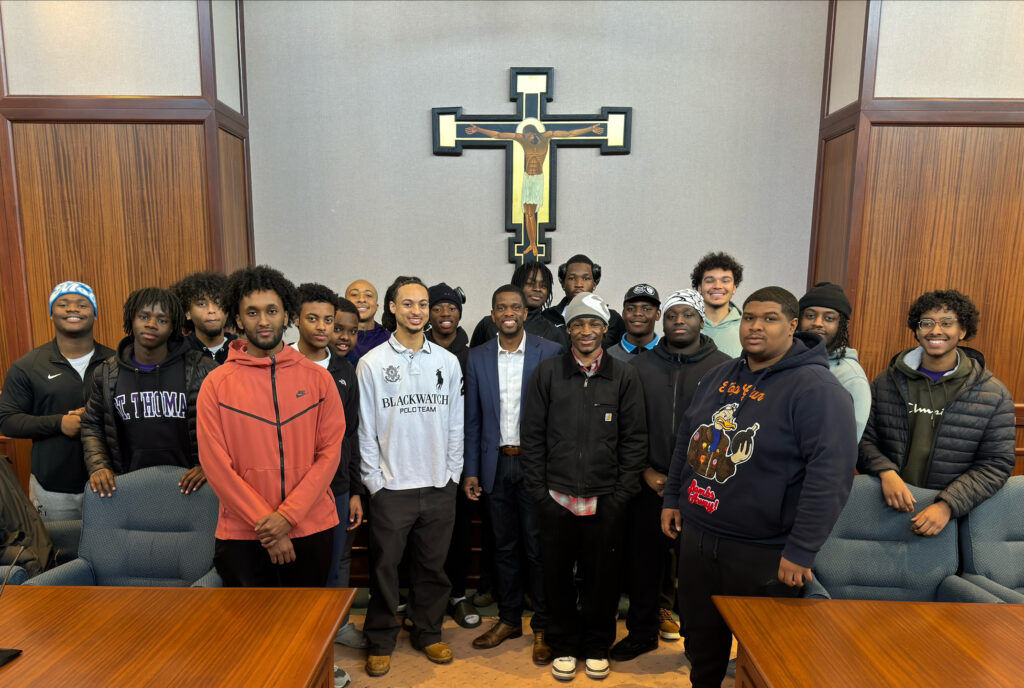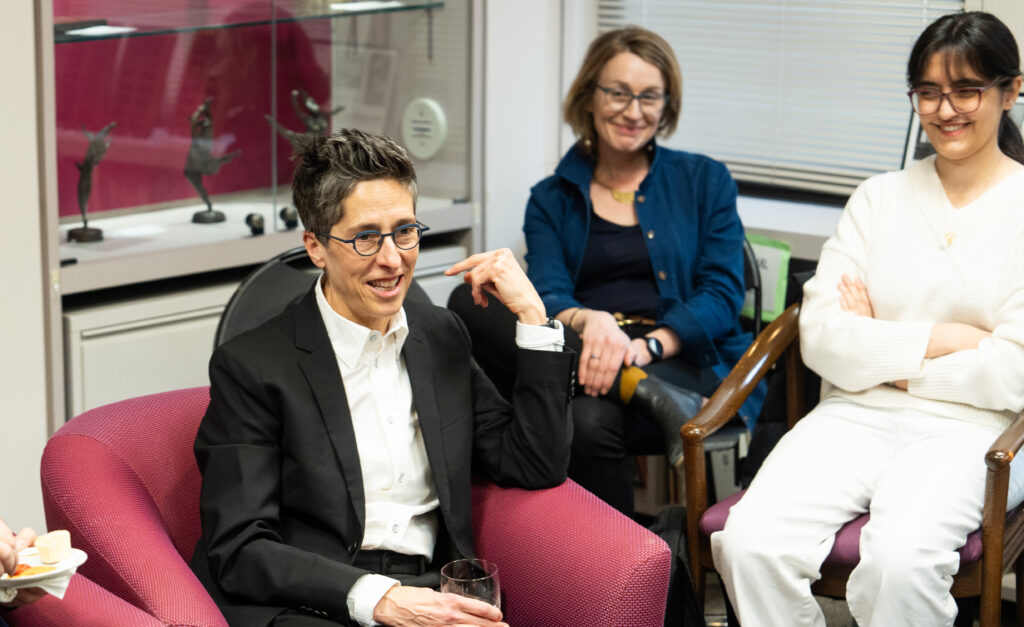Hundreds of St. Thomas students, faculty and staff filled O'Shaughnessy Educational Center auditorium on Tuesday to hear Dr. Derald Wing Sue of Columbia University present on microaggressions.
Sue’s presentation, “Microaggressions: Toxic Rain in Educational Settings and Daily Life,” drew from decades of research and framed the pervasive, everyday negative impact of microaggressions on marginalized individuals.
“There are microaggressions toward any marginalized group,” Sue said. “The thing that makes them distinct and different is the themes. … These themes are masked in terms of actions and words. Many people think they’re trivial, insignificant. All the research compiled shows … they are long-lasting and cumulative in terms of their harm.”
Sue and colleagues have defined microaggressions as “everyday slights, put-downs, insults, invalidations of people of color, women, any marginalized group ... they can experience in their day-to-day interactions with well-intentioned individuals who many were unaware they have engaged in an offensive or demeaning action.”
Sue spoke about the different forms this can take, from environmental micro and macro aggressions; to verbal and nonverbal microaggressions. Microaggressions, he said, are interpersonal, but macroaggressions reside in societal practices and institutions of a society.
“These are not simply isolated incidents or behaviors that you can easily stop,” Sue said. “They are reflections of implicit bias, of a worldview, of inclusion/exclusion, of superiority/inferiority … You can stop a behavior, but the worldview and implicit bias remains there.”
Microaggression impact
Sue presented five facts about microaggression that underscore the massive impact they have on marginalized members of society:
- Microaggressions are constant and continual without an end day (an everyday hassle may be time limited).
- Microaggressions are cumulative and any one may represent the feather that breaks the camel’s back.
- Microaggressions must be deciphered because they contain double messages (especially microinvalidations).
- Microaggressions are constant reminders of a person’s second-class status in society.
- Microaggressions symbolize past historical injustices (enslavement of African Americans, incarceration of Japanese Americans and the taking away of land from indigenous peoples).
Sue dedicated his talk to Maya Angelou and cited her poem, “Still I Rise”: “You may write me down in history/With your bitter, twisted lies/You may tread me in the very dirt/But still, like dust, I’ll rise./ You may shoot me with your words/You may cut me with your eyes/You may kill me with your hatefulness/But still, like air, I’ll rise.”
“Many people read this and think it’s about overt racism, hate crimes. … She talks about how it is the everyday indignities, slights, that are more harmful to people of color than overt hate crimes,” Sue said. “She spoke about having less to fear from a white supremacist than an everyday, ordinary person who perceives themselves as a good individual but engages in microaggressions. She likens it to death by a thousand cuts, versus the execution of a hate crime.”
Sue also cited an African proverb as representative of microaggressions: “The true tale of the lion hunt will never be told as long as the hunter tells the story.”
“We have a master narrative that overrides the narrative coming from marginalized communities. The tale from the hunter is that … racism is the thing of the past. Even if it is present, you can work hard enough to succeed. The counternarrative is that racism is alive and well. … This idea that, if you work hard enough, it is a myth of meritocracy. It’s the master narrative that’s imposed on people. Microaggressions are that, every day.”
As those narratives clash, the perception of everyday occurrences come to represent that divide, he said.
“I’ve been posed, many times, the question, ‘Whose reality is the right or true reality?’ … Literature indicates that groups who are most disempowered have the most accurate perception of bias in a situation. That’s not innate. Say, for an employee of color to survive in a white corporate world, they have to understand the thinking of white men. White men, to succeed, don’t have to know the experience of employees of color. For women, to succeed in a corporate world, they have to understand what men are thinking, but men don’t have to understand what women are experiencing to succeed,” Sue said. “We’re talking about a clash of realities.”
Those differences underscore the fact that many perpetrators of microaggressions have no idea their actions or words have had a negative impact on someone else. This is made all the more difficult for targets of microaggressions, Sue said, because they have to navigate naming and explaining the impact, and dealing with even more negative repercussions, i.e., being labeled a troublemaker or too sensitive.
Sue cited a statement from one of his books, Microaggressions and Marginality, in explaining the experience of being a marginalized community member and having to constantly deal with the full range of microaggressions’ impact: “It gets so tiring, you know. It sucks you dry. People don’t trust you. From the moment I [African American male] wake up, I know stepping out the door, that it will be the same, day after day. The bus can be packed, but no one will sit next to you … I guess it may be a good thing because you get more room, no one crowds you. You get served last … when they serve you, they have this phony smile and just want to get rid of you … you have to show more ID to cash a check, you turn on the TV and there you always see someone like you, being handcuffed and jailed. They look like you and sometimes you begin to think it is you! You are a plague! You try to hold it in, but sometimes you lose it. Explaining doesn’t help. They don’t want to hear. Even when they ask, ‘Why do you have a chip on your shoulder? Shit … I just walk away now. It doesn’t do any good explaining.”
Sue also discussed microinterventions, anti-bias strategies that allies can engage in that puts a check on the microaggression and encourages the perpetrator to consider the impact of what they said. An audience member asked what they can do if they don’t come up with an appropriate response in the moment.
“Come back to it later. [Microaggressions] happen quickly, but it doesn’t prevent you from talking to that person,” Sue said. “‘It really made me uncomfortable.’ Or, ‘I know you were trying to be funny, but you really hurt somebody.’ … It’s never too late, unless it’s a stranger.”







